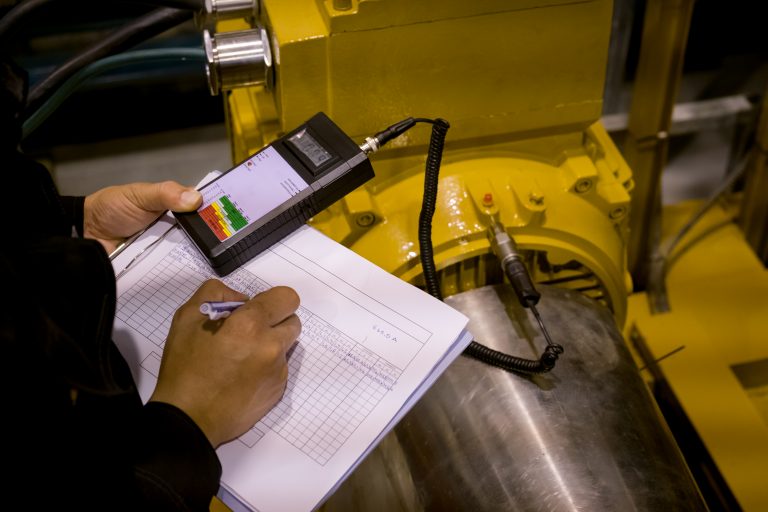Eddy Current Sensors and the Industrial Internet of Things
Good choice for condition-based monitoring programs
By Kevin Conlin, Kaman Precision Products Measurement Division
Condition-based monitoring (CBM) programs are experiencing an extreme makeover as part of the Industrial Internet of Things (IIoT) concept sweeping through the factory automation world. Companies want a central viewing point for the wealth of equipment now under one roof – and they want to be able to view what is going on through the Internet, Ethernet, or even from their homes when not at work. While the trend has been building steadily, it has really come on strong in the past decade. Inductive eddy current sensors can play an important part in CBM systems, especially for equipment where catastrophic failure would be extremely costly or dangerous.
IIoT and predictive maintenance
CBM forms the basis for condition-based predictive maintenance, in which maintenance is done when indicators show either that equipment is about to fail or that its performance is deteriorating. CBM uses such technologies as vibration analysis, motor current signature, ultrasound, and oil analysis to predict future failures.
Newer CBM tools allow users to identify problems and understand trends by harnessing the power of cloud computing and wireless communications, which enables huge amounts of data to be sent at greater speeds over greater distances with improved reliability. These newer CBM solutions enable access to data from anywhere in the world by anyone with approved access. This makes it easier to monitor remote installations using existing Internet connections, cellular technology, or satellite communications. [1]
The growth in these types of cloud-based CBM programs is closely tied to that of the Internet of Things (IoT), defined as “a global infrastructure …, enabling advanced services by interconnecting (physical and virtual) things based on existing and evolving interoperable information and communication technologies.” The term IIoT (Industrial Internet of Things), a subset of IoT, refers mainly to manufacturing industries. Many expect that the IIoT will enable manufacturers to improve productivity, exploit analytics for innovation, and transform the workforce. Connectivity and data acquisition, especially for predictive maintenance, will lead to intelligent maintenance systems that should reduce unexpected downtime and increase productivity. [2]
Advances in sensors and networking that form the backbone of the IIoT allow end users to track vast amounts of data, and track it a lot more easily. Rather than viewing each piece of equipment separately, connecting them together with IIoT tools means users can spot trends quicker. For CBM programs, the IIoT makes it much easier to see all the data and outputs and determine what is happening in a process than was possible in the past. Users can see the information in one window rather than multiple windows.
Before, manufacturers could install sensors, but at best they might include a light or alarm that required operators to make a manual check to find out what was wrong. It was often not worth the effort to install monitoring systems if an operator had to physically monitor the system. Manufacturers are now more inclined to spend money to monitor machines, knowing they can get at the data more easily and can even be alerted on their cell phones or personal computers.
Wireless connectivity reduces wiring costs, and better battery power enables monitoring of things that could not be monitored before in places that couldn’t be monitored before. While not necessarily always strictly part of IIoT, these improvements fit within the overall trend of connected CBM. The end result is hopefully less maintenance and fewer catastrophic failures.
There are considerable monetary savings to be made with this kind of predictive maintenance in manufacturing automation. Some say it will save up to 12 percent over scheduled repairs, reducing overall maintenance costs up to 30 percent and eliminating breakdowns up to 70 percent. [3]
Controlling against catastrophic failure in large pumps is a key IIoT CBM application. Systems monitor vibration data and information on whether the pump shaft is turning properly. They then use the output to determine if the pump needs maintenance, adjustment, or should be shut down. Plant shutdowns are expensive and time consuming, so better data enables plants to optimize maintenance schedules. At the same time, the availability of data can guard against the possibility of failure, which is also an extremely expensive proposition.
Another common use is simply monitoring how a particular machine is working. For example, the data can be used for precisely controlling material feed through or monitoring the gap or thickness in a grinding process. Very fine measurement can be obtained – down to the micron or sub-micron level.
Environmental and economic trends create new needs for condition-based monitoring programs
Recent environmental regulations are increasing the need for monitoring programs. In the past, manufacturers only tended to monitor machine oil levels if they had concerns about a particular machine getting too hot and burning up. Now, some regulatory agencies are requiring automatic oil level monitoring – with an alarm or light to immediately indicate any possible leaking. No longer is it acceptable to simply position a person with a dipstick to occasionally measure the oil level.
Economic trends are also in play, as manufactures seek to use CBM programs to improve their overall system efficiency and reduce power use. They can now make changes on the fly with a stroke of the keyboard and have the machine implement the change.
Eddy current sensors for IIoT condition-based monitoring programs
Many different types of sensors can be used in IIoT CBM programs. The right choice will be based on what is being monitored, technical constraints, and budget considerations. Designers look at what the output is, the amount of power it is consuming, and the frequency response. They may consider how many sensors they have on one machine and decide if all need to be going out to the IIoT, or if monitoring can be effective with just selective sensors included.
In some cases, newer sensors may be too fast for the equipment they are on and system designers have to determine just how much data operators really need to see. For example, vibration may be very fast, and if the data is going to a wireless component of a connected IIoT system, it may not be able to handle the sensor speed. This may be acceptable, for example, if operators do not need all vibration data – just worst case data showing too much vibration.
Reliable, high precision sensors are generally used to respond to worst case scenarios that will cost the most money in the event of failure. Inductive eddy current sensors are an excellent choice for monitoring targets that are conductive, cannot be touched, must be monitored really precisely, and may be moving very fast.
Inductive eddy current sensors operate by generating a high frequency electro-magnetic field about the sensor coil which induces eddy currents in a target material. A conductive target is required, but a ground connection to the measuring system is not necessary. Sensor performance is affected by target material conductivity. Inductive sensors have a large spot size in comparison to other technologies. Performance is affected by temperature changes, but not by environmental contaminants or target finish characteristics. They can operate in a vacuum or in fluids. Nonconductive material between the sensor and the target is not detected. The measuring distance is typically 30-50 percent of sensor diameter. The can be used in difficult environments, for example in temperatures up to 1200°F and at pressures of over 5000 pounds per square inch (psi).
Kaman is working with several customers using eddy current sensors as part of IIoT CBM systems. One is a major provider of subsea production systems and products, which develops systems for monitoring subsea pumps. If a pump located at the bottom of the ocean fails, it is extremely expensive to fix, not to mention the lost revenue due to downtime. In the past, the subsea product company could only monitor the vibration of the pump as a whole, but the external vibration does not tell the complete story. Now, they are using sensors to be able to directly monitor shaft vibrations. They can tell if the shafts are rotating correctly, which gives them an accurate look before any issues become a big problem that costs money to repair – and before oil floods the ocean!
Of course, applications like this have actually been around for years; 15-20 years ago it was called remote monitoring, but those earlier applications were more about transmitting data to a central location rather than interconnecting many different things. With the newer systems, data from the sensor goes back to the surface, for satellite transmission. Umbilical cables carry power, fiber optic lines (data) and more from the floor to the surface. From there, the information can be distributed via cell signal. The shaft vibration information is added to temperature and pressure data collected. All the data feeds back into an IIoT system that can be viewed by multiple parties and devices.
Other examples can be found in the nuclear power industry, which uses eddy current sensors in CBM systems that monitor shafts and pumps that are running at high temperatures and high pressure. Other CBM applications include gas turbine blade gap and turbine blade tip timing measurements.
As the notion of using networking capabilities for IIoT applications across the manufacturing arena takes hold, consider use of versatile inductive eddy current sensors as part of a robust CBM package.
References
[1] Cloud Technology Condition-Based Monitoring, https://reliabilityweb.com/articles/entry/cloud-technology_condition_based_monitoring, retrieved 7/18/17.
[2] Internet of things, Wikipedia, https://en.wikipedia.org/wiki/Internet_of_things
[3] G. P. Sullivan, et al, “Operations & Maintenance Best Practices: A Guide to Achieving Operational Efficiency, Release 3.0,” Pacific Northwest National Laboratory, U.S. Department of Energy, August 2010.



